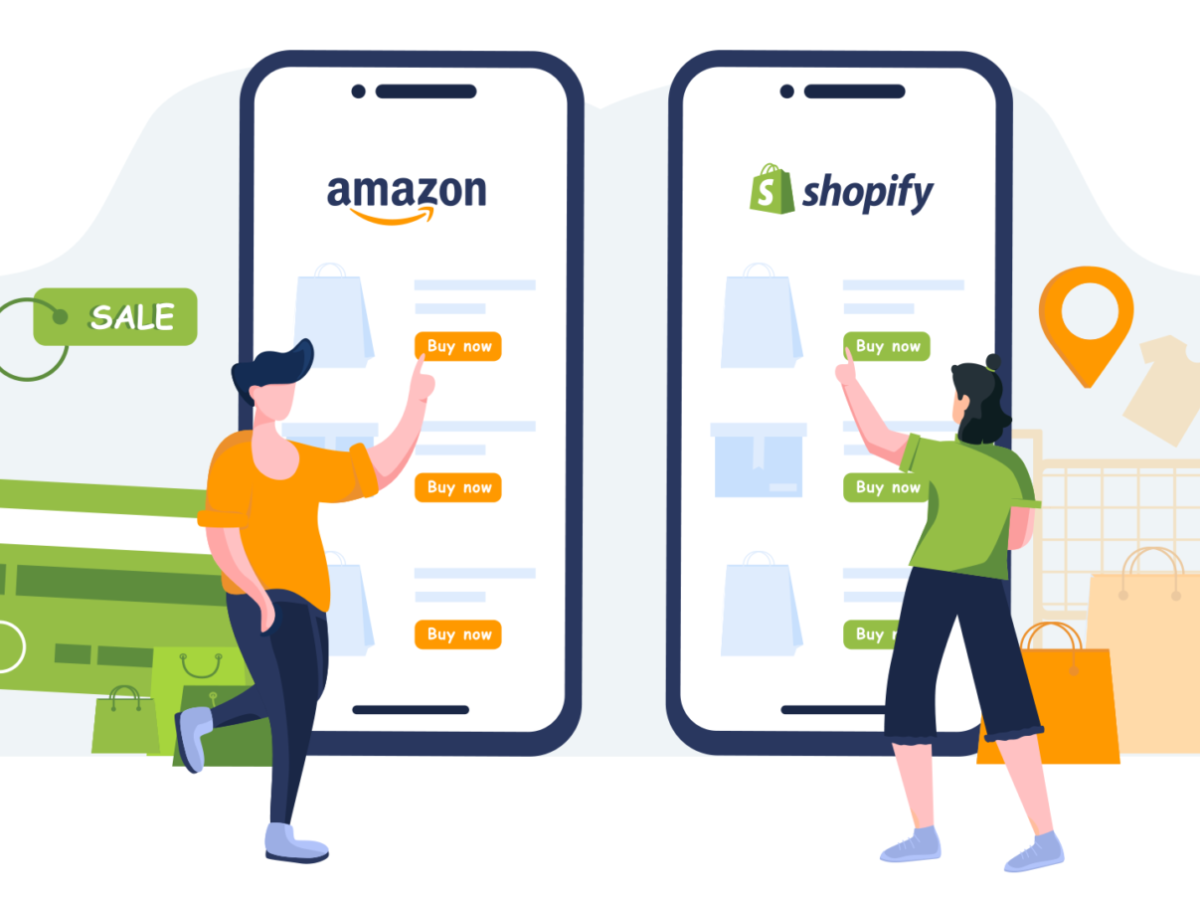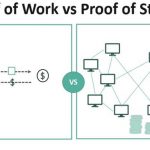
Online sales are growing every day, and therefore more and more mobile solutions appear in the e-commerce industry. Consumers want to purchase goods and services anytime, anywhere, even on the go. More and more people are choosing e-commerce mobile apps over websites because the apps are fast, responsive, and user-friendly. If your business is related to online retail, you definitely need the right mobile app!
From e-commerce to M-commerce
With the advent of the App Store and Android Market (now Google Play) in 2008, the mobile app development market has become a thriving niche, which has led to a rapid increase in the number of applications. Today, the total number of applications available for download in the App Store and Google Play exceeds 7 million.
The coronavirus pandemic has changed the world of e-commerce, the field has begun to develop rapidly, as evidenced by the emergence and rapid growth of mobile commerce or m-commerce. The trend is gaining popularity because shopping with thousands of products from the largest stores in your pocket is very convenient.
Global mobile sales were $2.3 trillion in 2019 and are projected to reach $3.5 trillion in 2021, accounting for 72.9% of total e-commerce. On Black Friday and Cyber Monday 2019, mobile phones and tablets accounted for 69% of total sales, according to Shopify.
Mobile e-commerce applications open up new channels for retailers to connect with customers and reach a wider audience. However, these are not all the benefits for online stores.
Benefits of developing mobile applications for e-commerce stores
If you want to build a successful retail enterprise, focus on customer acquisition and sales growth, the importance of mobile eCommerce solutions should be obvious. E-commerce applications have a number of advantages, we have highlighted four of the most important ones.
1. Loyal customers
Despite the fact that the application is a copy of an existing website, it is well optimized, personalized and carefully thought out, which makes it much easier to attract and retain new customers, improve the quality of service. Customers find themselves on a convenient trading platform, where they can choose and purchase goods at a comfortable pace, without fuss.
The application has several important advantages over the site:
Mobility . Users get more freedom, they can make purchases anywhere and anytime.
Download time . App pages load faster, so they attract more customers. Managers need to understand that every second counts in the retail business. Most visitors will leave the site and go to competitors if it takes more than three or four seconds to load a page.
offline access . The best e-commerce applications can provide users with basic functionality (compare products, check prices) even offline using the full power of a mobile device.
Purchase preferences and previous orders can be saved in the app and used for personalized offers.
All these advantages help to create a strong loyal audience for your business.
2. Brand awareness
Mobile apps provide a strong connection between brands and customers. Users willingly share links to their favorite sites, talk about customer experience on social networks, and recommend products to loved ones. You can integrate popular social media platforms into your application so that customers can discuss your products and services.
Thus, users will not only advertise your product, but also create a brand reputation, attract the attention of potential customers to it.
In addition, you can send push notifications to users with special offers, information about promotions, discounts and sales. You will offer customers savings, so they are more likely to interact with the store.
3. Improve efficiency and increase revenue
Mobile application development is quite expensive, but with the right approach, the costs will quickly pay off and increase sales. The correlation is simple: a good app with the right concept and functionality brings in more customers; more customers make more orders, therefore, your profit grows.
Working with push notifications will help increase sales and build strong relationships with users. With push notifications, you can instantly deliver the information you need to your customers and inspire them to order immediately.
4. Detailed analytics
Mobile apps are a treasure trove of useful customer information. Mobile functionality allows you to track user behavior: responsiveness to specific content and features, feedback, session duration, audience composition, and more. Such information can help you work on improvements and updates, create personalized content, develop an effective marketing strategy and advertising campaigns.
5. Contactless payments
Thanks to the advent of mobile contactless payment technology, modern smartphones can replace cash and credit cards. Payment applications provide ease, speed and security of paying for goods and services. At the checkout, you do not have to take out your wallet or card, just put your phone to the payment terminal and confirm the payment.
This has become especially true during the COVID-19 pandemic, when you should not touch things once again and people are trying to reduce the time spent in stores.
How to develop a mobile application for e-commerce
When ordering the development of a mobile application for an e-commerce business, you need to take into account many details and take certain steps, then the finished product will meet your goals and objectives.
Strategy
First of all, you need a strategy. Define your goals, market and target audience that you want to reach. This will help you imagine the future application, determine the functions that it should perform, and describe your ideas to the development team.
Design
The design of a mobile application is not only about how it looks, but also how it works. Therefore, it is important that the application has a thoughtful design that is visually pleasing and easy to use.
Most people often rely on their first impression when evaluating something. It takes about 50 milliseconds to form an opinion on an item and decide whether you like it or not. Thus, the attractive design of the mobile application provides a positive user experience, which significantly increases customer loyalty and accelerates payback.
Here are some guidelines for creating an attractive app design.
1. The simpler the better
Users prefer simple and logical navigation elements because they do not want to spend time figuring out how to perform a particular operation. Any complication is the wrong approach to product design.
Often, mobile application developers try to add as many features as possible, thinking that this will bring the application to the first positions. In fact, the more concise the application, the better. The application should do exactly what the user needs and nothing more. This approach to design can be called flat design: you stick to minimalism and use simple elements.
2. Design accessible to all
Good design is design that is accessible to all users. The accessibility of the design means the absence of negative emotions when interacting with the application. If certain categories of people cannot use your product, it is better to change the design. The app must be accessible to people with disabilities. Millions of users have vision or hearing problems, not taking into account their needs can be a fatal mistake for your business.
Microsoft and other leading IT service providers offer a wide range of tools and technologies to help people with disabilities break down digital barriers and provide equal opportunities. More and more developing companies are working in accordance with the WAI (Web Accessibility Initiative) concept.
Another important point is compatibility with all possible devices. To reach more users, your application must work on Android and iOS and be optimized for various, at least the most popular, screen sizes and resolutions.
3. Learn from the experiences of others
Most successful applications have similar design and layout of functional elements. So when it comes to creating a new app, don’t reinvent the wheel. Analyze the best solutions of competitors and create your product based on them. This does not mean that you need to copy everything to the last pixel and not come up with anything of your own. This means that you should make the most of the good examples of others.
Users prefer an intuitive experience with applications, and even in new solutions they expect to see familiar features and gesture navigation. The designer must understand and take into account the needs of users and be extremely careful with innovative ideas when creating an interface.
Of course, innovative technologies and market trends can contribute to the emergence of new features. But don’t implement them all at once. Do it gradually, step by step, and then you can add new things without losing the convenience of the usual user experience.
4. Choose Your Visuals Carefully
It is visual elements that contribute to user engagement more than anything else. Therefore, it is very important to create a visually appealing interface.
Choose suitable fonts that fit the idea of the app and are easy to read at the same time. Avoid fancy fonts: they may look beautiful on their own, but when used in an application, they can completely spoil the impression.
Pay special attention to the selection of colors. With its help, you can create a positive impression of the interaction with the application, or, conversely, alienate and disappoint the user.
Be consistent! Design elements should guide users in their actions and not mislead: you cannot radically change the rules of interaction. Controls on all pages of an application should support the same style and idea.
5. Basic testing based on user feedback
Even the smallest mistake can lead to the removal of the application. If the font is not readable or the product has a strange design, it is unlikely to become popular. Therefore, application testing requires special attention. Involve end users in this cause, test the application on a focus group, because no one knows what is best for users, except themselves.
Development
In accordance with current trends, mobile devices should be compatible with at least Android and iOS. Ideally, if you can develop an application for each of the systems, but with a limited budget, you should consider developing a cross-platform product.
Effective communication between the user and the product is in most cases achieved through an intuitive user interface. To create it, you can use ready-made design libraries. For example, for iOS components, you can use the open source service Cocoa Controls. For Android developers, a wide collection of user interface designs is provided in Android Arsenal.
After designing the user interface, you need to choose a framework for creating an e-commerce application. This way you can access data from any web server.
The leading open source e-commerce platform is Woo Commerce. It is used by almost 30% of all online stores and is perhaps the most customizable tool for building an online business.
Magento is another popular open source platform. Written in PHP , fully scalable and available for all types of businesses.
The list of platforms for e-commerce applications is huge, and choosing the right one is up to you and your needs.
The next step in creating an application is to integrate a payment gateway, as it is very important to ensure secure payments for your customers. Without a gateway, all banking information could be at risk. The most popular online payment systems are PayPal, Google Wallet and Apple Pay.
Marketing
Once the mobile application for your business is ready, it will need to be actively promoted. You must have a well thought out advertising campaign. You can use social media, emails, newsletters, advertisements, and other tools to spread the word about the app to as many users as possible. You can promote the product yourself or use the services of competent specialists.
Support
Since mobile e-commerce applications are used for online shopping, security issues are critical during development and post-release. The developer must provide for several levels of security, full maintenance and support of the project after launch. If you fail to keep the data secure, your product will not be trusted and therefore the application will not be used.
How much does it cost to develop a mobile e-commerce app?
The cost of creating an e-commerce application consists of several components. To estimate the approximate cost of a future product, you need to consider all of them.
Development costs
This category of expenses includes:
- salary for developers, project managers, designers, QA engineers;
- infrastructure;
- web services;
- integration into social networks.
Additional costs include:
- support;
- marketing;
- advertising;
- updates.
Another important cost factor is the development platform. Because iOS doesn’t have as much fragmentation as Android , an app can be built faster and at a lower cost. Android apps take longer to create and cost more.
The complexity of the project should also be taken into account. Roughly speaking, development costs can range from $1,000 for a simple application to $150,000 or more for complex applications.
Find a reliable development team
E-commerce is a large ecosystem that includes customers, vendors, technology, and marketing activities. Creating a mobile application is an important step for trading companies and requires a serious approach. The application allows the business to develop, reach a large audience, and increase profits. And it is very important that the product be developed in accordance with the latest trends and meet the needs of both business and customers.
A team of experts offers their assistance in creating a mobile application that will help your business become more popular and attract the attention of new customers. Contact us and we will find the best solution for your task.




Average Rating